Matcha
Matcha And Green Tea: Health Benefits Explored
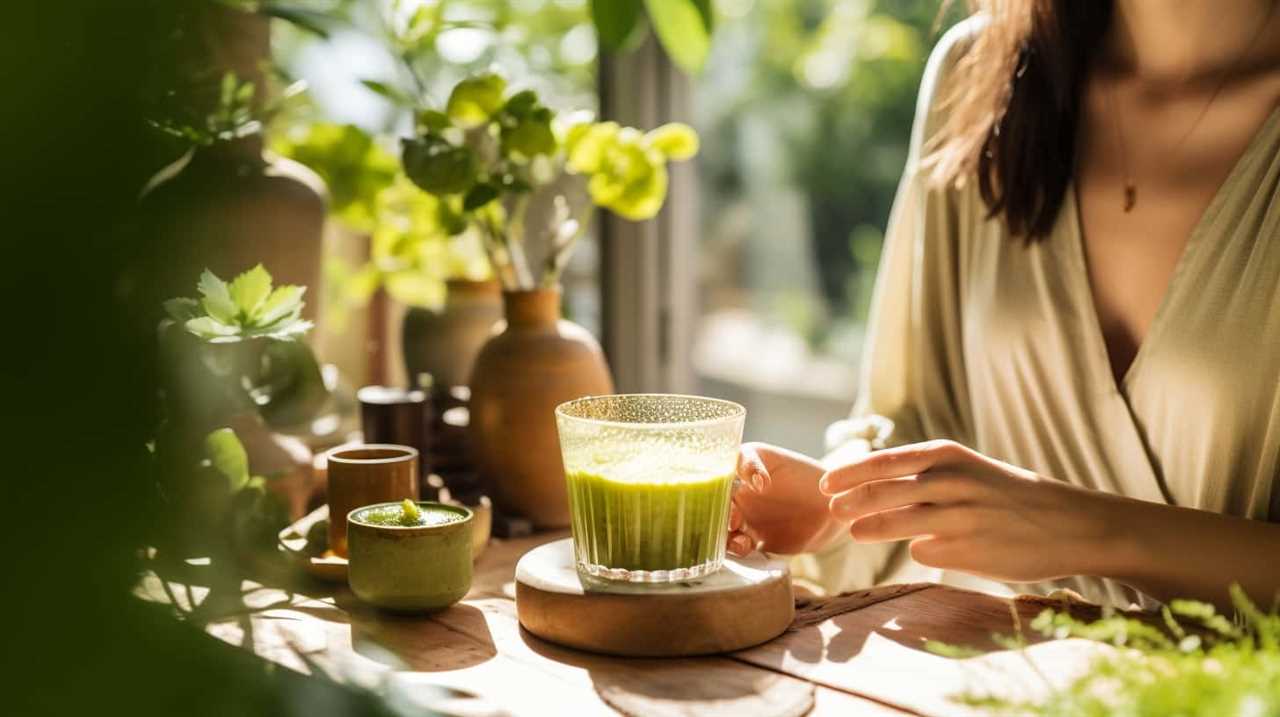
When it comes to the world of tea, few things captivate our senses quite like matcha and green tea.
The vibrant emerald hues of these leaves, steeped in tradition and culture, offer a journey of mastery for those seeking a deeper connection with their daily cuppa.
From the ancient roots of matcha and green tea to the diverse varieties and production methods, we will explore the intricacies and benefits of these beloved beverages.
Discover how matcha and green tea can nurture not only our bodies but also our minds, with their potential to promote skin and brain health.
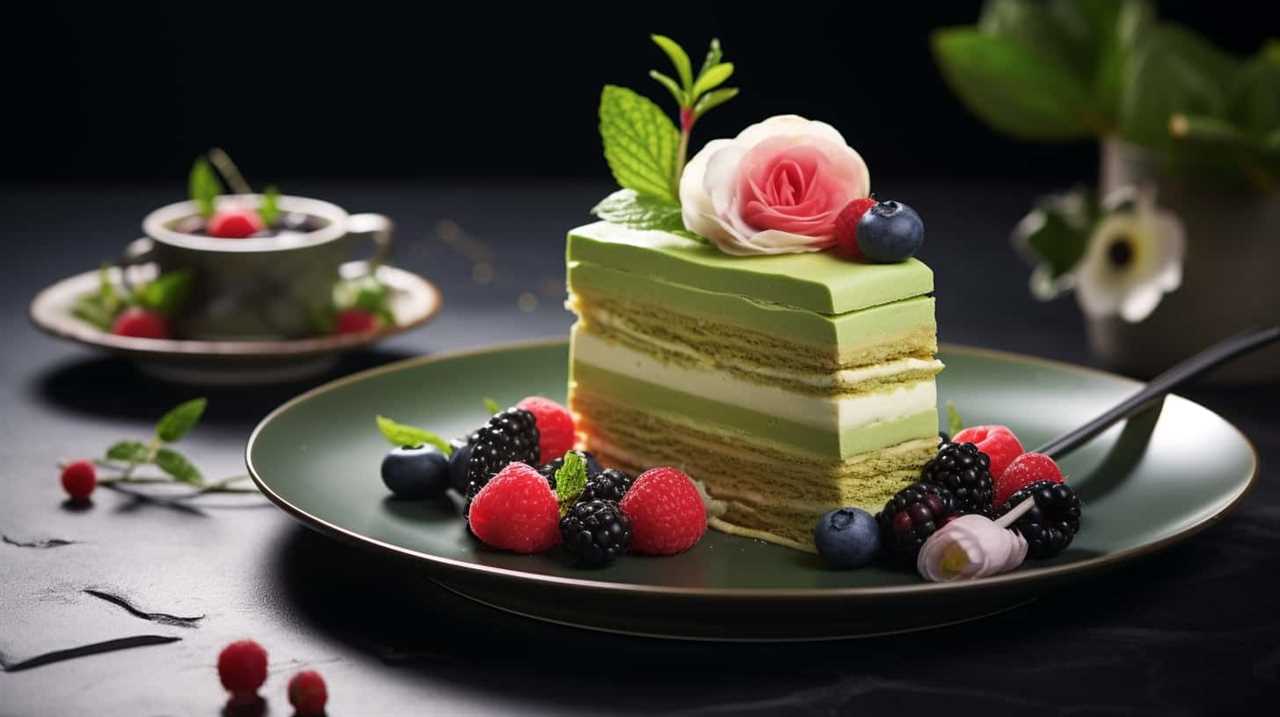
Join us as we delve into delicious recipes and uncover the best places to source high-quality matcha and green tea.
Let us embark on this flavorful voyage together.
Key Takeaways
- Matcha and green tea have a long history and cultural significance, particularly in traditional Japanese tea ceremonies.
- Both matcha and green tea offer numerous health benefits, including improved heart health, enhanced brain function, and a strengthened immune system.
- The production of matcha and green tea involves specific methods, such as shade-growing tea leaves for matcha and steaming or pan-firing for green tea.
- Matcha and green tea can support detoxification, promote skin health, aid in weight loss, and provide relaxation and stress reduction.
History of Matcha and Green Tea
The history of matcha and green tea can be traced back to ancient China, where the cultivation and consumption of these beverages first began. Matcha, a powdered form of green tea, holds great cultural significance in traditional Japanese tea ceremonies. These ceremonies, rooted in Zen Buddhism, emphasize mindfulness, tranquility, and the appreciation of nature.
Matcha is prepared by whisking the finely ground tea leaves into hot water, creating a vibrant green beverage with a rich and earthy flavor. Green tea, on the other hand, has been enjoyed for centuries for its various health benefits. Packed with antioxidants and polyphenols, green tea is known to promote weight loss, boost the immune system, and improve heart health.
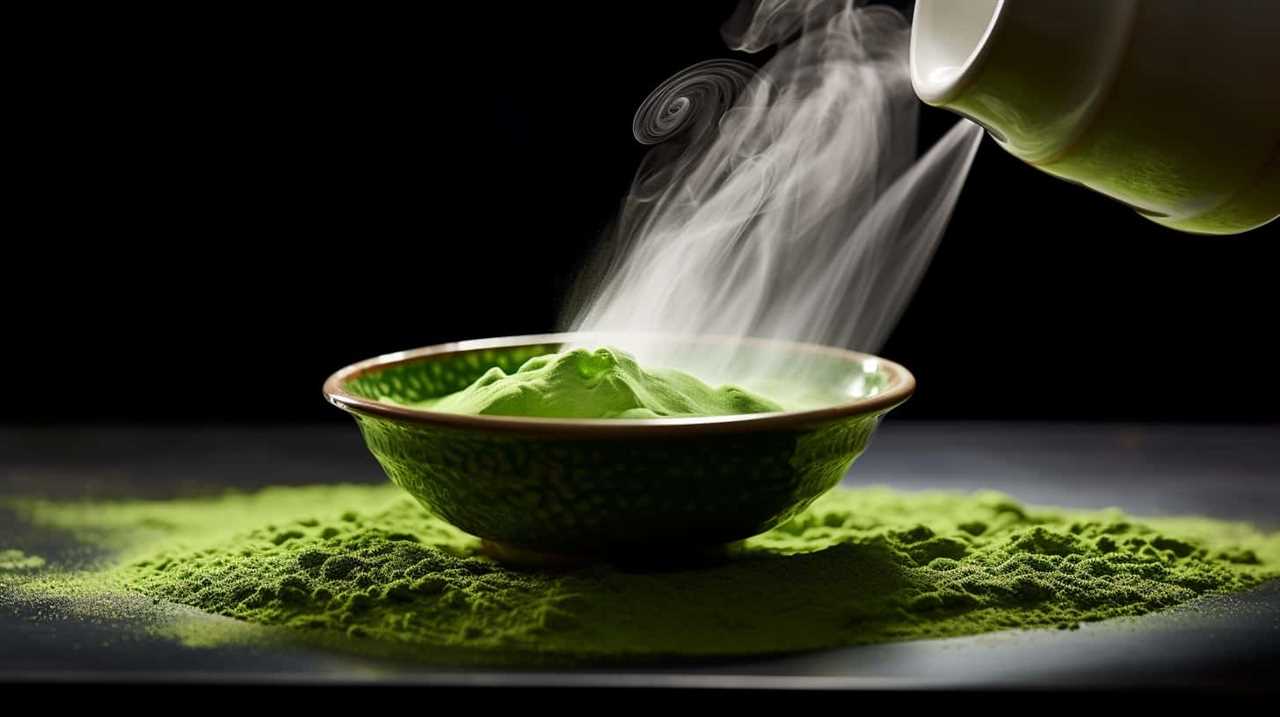
Whether it’s participating in a tea ceremony or sipping a cup of green tea, the history and benefits of matcha and green tea continue to captivate and nourish both the body and the soul.
Cultural Significance of Matcha and Green Tea
As we delve into the cultural significance of matcha and green tea, it’s important to explore their deep-rooted connection to ancient traditions and rituals.
Matcha and green tea have been an integral part of cultural traditions in Japan and other Asian countries for centuries. They’ve been used in tea ceremonies, where the preparation and consumption of tea are elevated to an art form. These ceremonies aren’t only a way to enjoy the taste of tea but also a means to cultivate mindfulness, tranquility, and harmony.
Matcha and green tea are also known for their health benefits. They’re rich in antioxidants and have been linked to improved heart health, enhanced brain function, and a strengthened immune system.
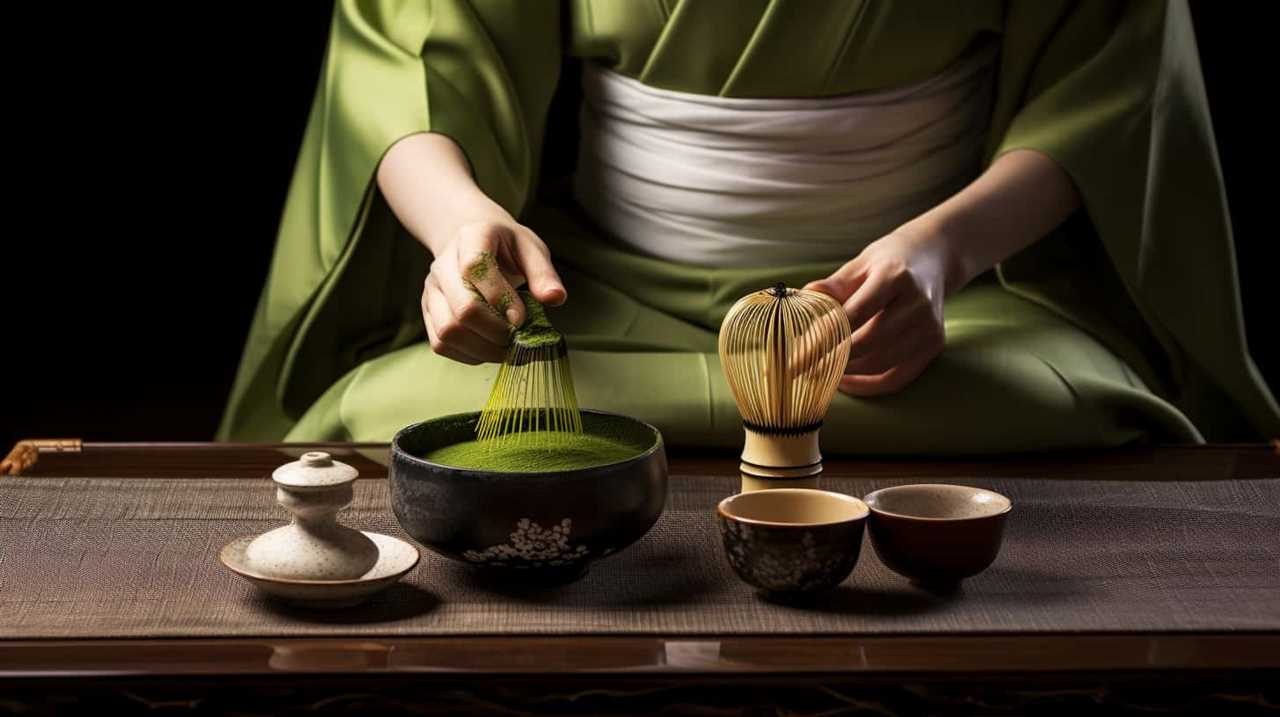
The cultural significance of matcha and green tea lies not only in their taste and aroma but also in their ability to promote well-being and connect us to ancient traditions.
Different Types of Matcha and Green Tea
Continuing our exploration into the cultural significance of matcha and green tea, let’s now delve into the different types available and their unique characteristics.
When it comes to matcha, there are primarily two main types: ceremonial grade and culinary grade. Ceremonial grade matcha is made from the youngest tea leaves, resulting in a vibrant green color and smooth, mellow flavor. It’s often used in traditional Japanese tea ceremonies.
On the other hand, culinary grade matcha is slightly more bitter and is commonly used in cooking and baking.
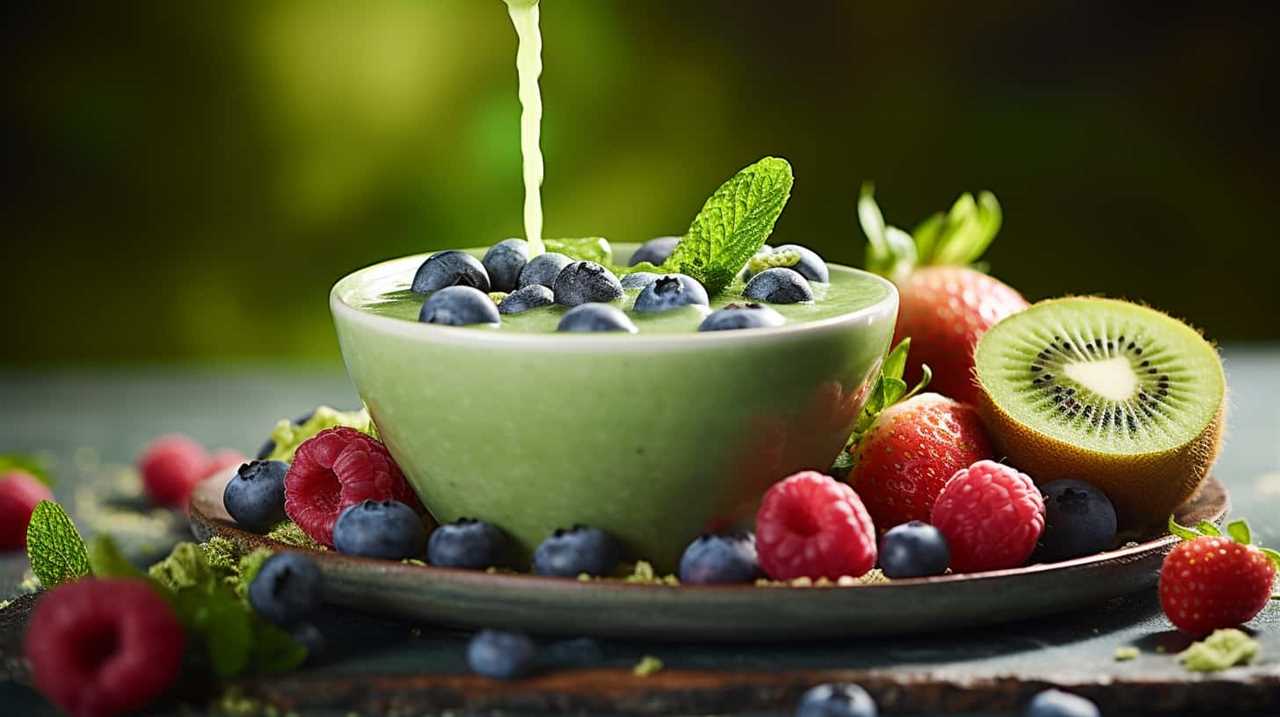
As for green tea, there are various types such as sencha, gyokuro, and bancha. Each type has its own distinct flavor and aroma, ranging from grassy and vegetal to floral and sweet.
Both matcha and green tea are known for their numerous health benefits, including high antioxidant content and potential metabolism-boosting properties.
How Matcha and Green Tea Are Produced
When it comes to the production of matcha and green tea, there are several key points to consider.
First, tea leaf processing methods play a crucial role in determining the final product.

Additionally, shade-grown tea leaves are essential for producing high-quality matcha.
Lastly, stone-ground matcha powder is a traditional method used to create a fine, vibrant green powder that’s prized for its flavor and health benefits.
Let’s explore each of these points in more detail.
Tea Leaf Processing Methods
We will now explore the tea leaf processing methods for producing matcha and green tea.
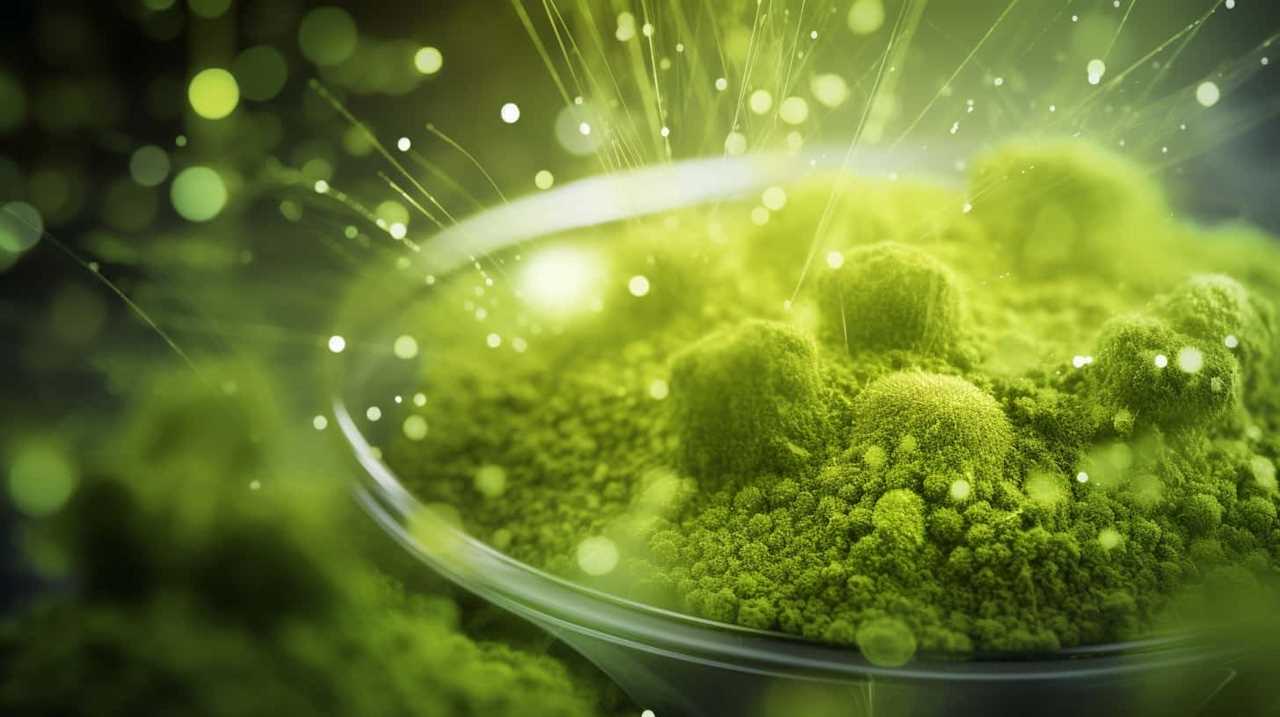
Tea leaf cultivation is an essential step in the production of both matcha and green tea. The leaves are carefully grown and harvested, ensuring optimal flavor and quality.
After cultivation, the leaves undergo different processing techniques to create matcha and green tea.
Matcha is made by shade-growing the tea plants, which increases the chlorophyll content and produces vibrant green leaves. The leaves are then steamed, dried, and ground into a fine powder.
Green tea, on the other hand, involves steaming or pan-firing the leaves to halt oxidation. The leaves are then rolled, dried, and shaped.
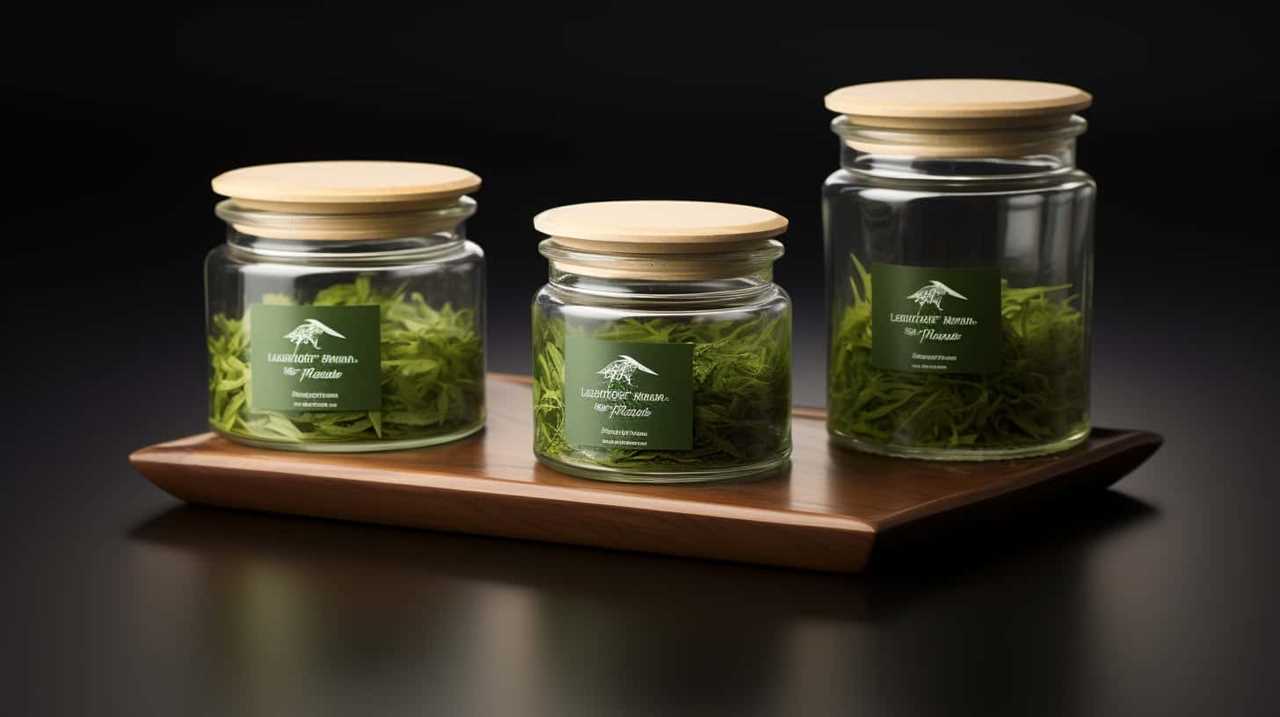
These processing methods contribute to the distinct flavors and characteristics of matcha and green tea, making them ideal for traditional tea ceremonies and tea enthusiasts seeking mastery.
Shade-Grown Tea Leaves
To understand how matcha and green tea are produced, let’s delve into the cultivation and processing of shade-grown tea leaves. Shade-grown tea cultivation techniques involve covering the tea plants with shades to limit the exposure to sunlight. This method stimulates the growth of chlorophyll and amino acids, giving the leaves a vibrant green color and enhancing the flavor profile. The process begins with carefully selecting the tea bushes and nurturing them in shaded areas for up to four weeks before harvest. The leaves are then hand-picked, steamed, and dried to preserve their rich nutrients.
Shade-grown tea leaves offer numerous health benefits. They are known to contain higher levels of antioxidants, including catechins and polyphenols, which support immune function and fight free radicals. Additionally, the increased amino acid content, particularly L-theanine, promotes relaxation, mental clarity, and a sense of well-being.
For a comprehensive understanding, please refer to the table below:

| Cultivation Techniques | Health Benefits of Shade-Grown Tea |
|---|---|
| Shade-grown tea cultivation techniques involve covering the tea plants with shades to limit the exposure to sunlight. | Higher levels of antioxidants, including catechins and polyphenols |
| The process stimulates the growth of chlorophyll and amino acids, giving the leaves a vibrant green color and enhancing the flavor profile. | Supports immune function and fights free radicals |
| Tea bushes are carefully selected and nurtured in shaded areas for up to four weeks before harvest. | Promotes relaxation, mental clarity, and a sense of well-being |
| Leaves are hand-picked, steamed, and dried to preserve their rich nutrients. | Enhances flavor and aroma |
| Shade-grown tea leaves offer numerous health benefits. | Boosts metabolism and aids in weight management |
Stone-Ground Matcha Powder
To produce matcha and green tea, we employ the process of stone-grinding the tea leaves into a fine powder. Stone-ground matcha production is a traditional method that ensures the highest quality and preserves the tea’s natural flavors and nutrients.
The process begins with carefully selected shade-grown tea leaves, which are then steamed to prevent oxidation. After steaming, the leaves are dried and sorted, removing any stems or impurities. The dried leaves, known as tencha, are then ground using granite stone mills, which slowly crush the leaves into a fine powder. This meticulous process requires skill and precision to achieve the desired texture and consistency.
Traditional matcha preparation techniques involve whisking the powdered tea with hot water until frothy, creating a smooth and invigorating beverage that’s cherished for its vibrant flavor and health benefits.
The Benefits of Drinking Matcha and Green Tea
When it comes to the benefits of drinking matcha and green tea, there are several points worth discussing.
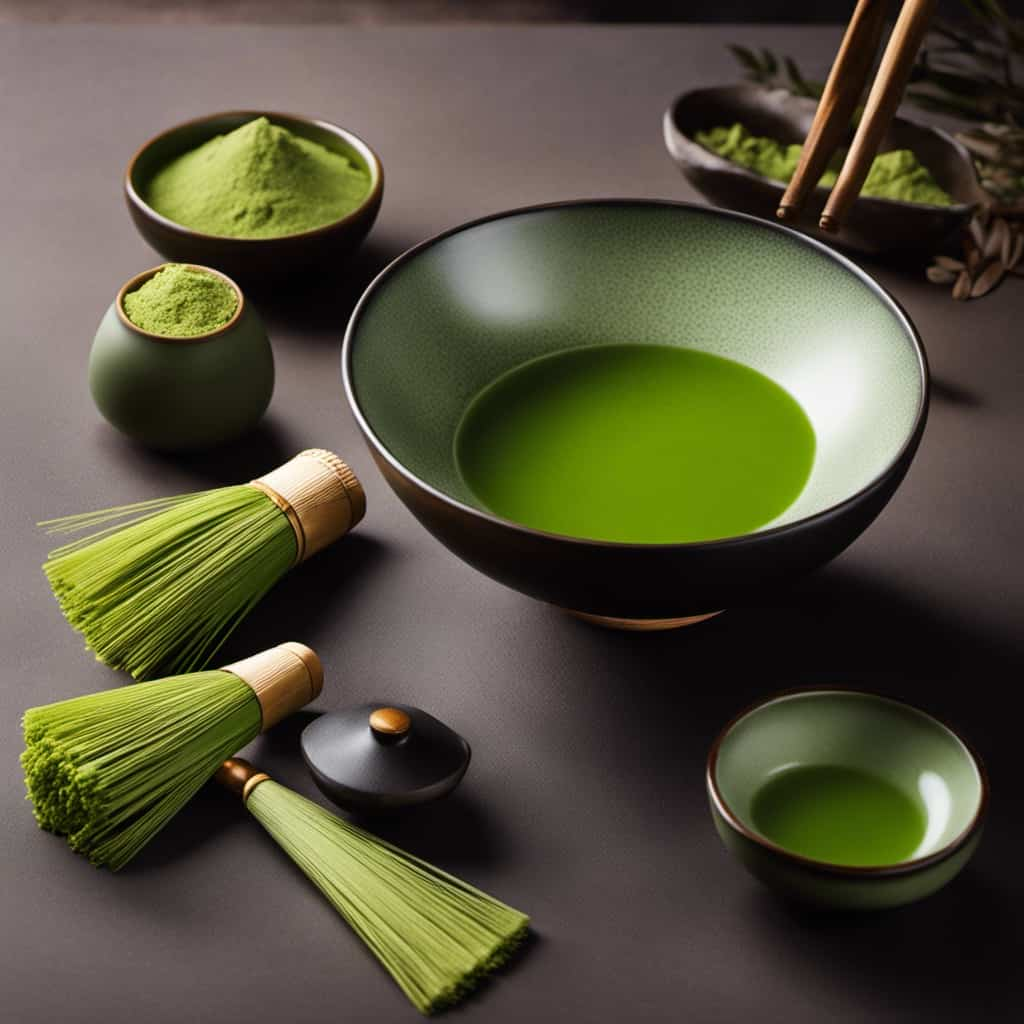
Firstly, matcha is known to be an antioxidant powerhouse, with higher levels of antioxidants than regular green tea.
Secondly, both matcha and green tea have been found to boost metabolism naturally, aiding in weight loss and overall health.
Lastly, drinking these teas can also have a calming effect on the mind, promoting relaxation and reducing stress.
Antioxidant Powerhouse
One of the key benefits of drinking matcha and green tea is their high antioxidant content. Antioxidants are powerful compounds that help protect the body against the damaging effects of free radicals, which are unstable molecules that can cause oxidative stress and contribute to various health issues. When you consume matcha or green tea, you’re giving your body a boost of these beneficial antioxidants, which can have a range of health benefits.

Here are five reasons why matcha and green tea are considered antioxidant powerhouses:
- They can help reduce inflammation in the body.
- They may improve heart health by reducing the risk of cardiovascular diseases.
- They can support brain health and improve cognitive function.
- They may help regulate blood sugar levels and improve insulin sensitivity.
- They can enhance the body’s natural detoxification process.
Boosts Metabolism Naturally
The high antioxidant content of matcha and green tea continues to benefit our metabolism naturally. Drinking matcha and green tea can help boost metabolism, which in turn can aid in weight loss.
Matcha and green tea contain catechins, a type of antioxidant that has been shown to increase the body’s thermogenesis, or the rate at which it burns calories. This can lead to an increase in metabolism and help with weight management.
Additionally, matcha and green tea also contain caffeine, which can further enhance the metabolic rate and promote weight loss.
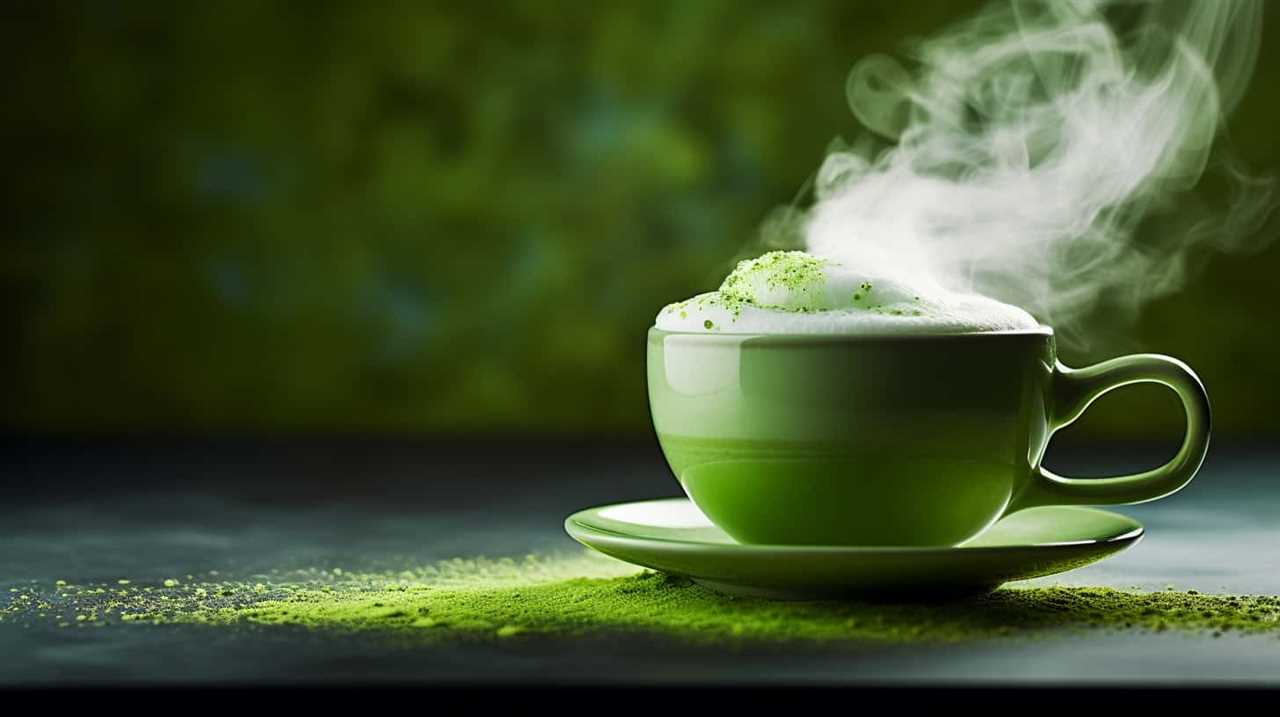
Regular consumption of matcha and green tea can therefore be a natural and effective way to support a healthy metabolism and achieve weight loss goals.
Calms the Mind
Drinking matcha and green tea calms our mind and provides numerous benefits. These beverages have been used for centuries for their calming effects and are often recommended as part of relaxation techniques. Here are five reasons why matcha and green tea are great for calming the mind:
- L-Theanine: Matcha and green tea contain high levels of L-Theanine, an amino acid that promotes relaxation and reduces stress.
- Caffeine content: Unlike coffee, matcha and green tea have lower levels of caffeine, providing a gentle energy boost without the jitters.
- Antioxidants: Both matcha and green tea are rich in antioxidants, which help protect our brain cells and improve cognitive function.
- Ritualistic practice: Preparing and sipping on matcha or green tea can be a meditative experience, helping to center and calm our mind.
- Mindfulness: Taking the time to sit down and enjoy a cup of tea encourages us to be present in the moment, promoting relaxation and stress reduction.
Matcha and Green Tea for Weight Loss
We found that incorporating matcha and green tea into our diet helped us shed excess weight more effectively. Numerous studies have shown the weight loss benefits of these teas, supported by scientific research.
Matcha, a finely ground powdered green tea, is particularly effective due to its high concentration of antioxidants and metabolism-boosting properties. The catechins found in matcha have been found to enhance fat oxidation and increase thermogenesis, aiding in weight loss.
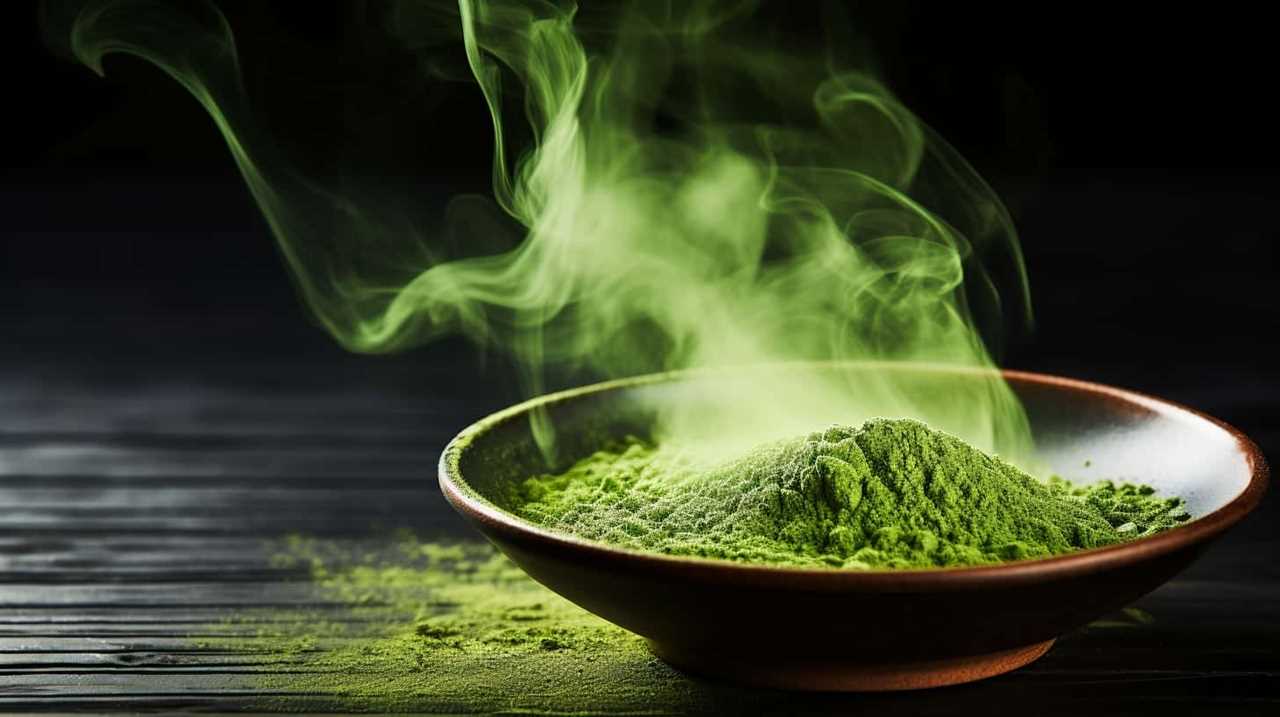
Green tea, on the other hand, contains a compound called EGCG, which has been shown to boost metabolism and promote fat burning. Additionally, both matcha and green tea can help suppress appetite and reduce calorie intake, further contributing to weight loss.
Incorporating matcha and green tea into a balanced diet and exercise routine can be a powerful tool for those seeking to shed excess weight.
Matcha and Green Tea for Energy and Focus
Incorporating matcha and green tea into our daily routine, we experienced a significant boost in energy and improved focus. Here are some reasons why matcha and green tea are great options for enhancing energy and concentration:
- Matcha vs. Coffee: While coffee provides a quick burst of energy, matcha offers a more sustained and focused energy boost without the jitters or crash commonly associated with coffee.
- L-Theanine: Matcha contains L-Theanine, an amino acid that promotes relaxation and mental alertness. It works synergistically with caffeine to provide a calm yet focused state of mind.
- Antioxidants: Both matcha and green tea are rich in antioxidants, which help protect the brain from oxidative stress and improve cognitive function.
- Catechins: Matcha and green tea are abundant in catechins, which have been shown to enhance attention, memory, and overall brain function.
- Benefits of Matcha for Weight Loss: Matcha can also aid in weight loss by boosting metabolism and increasing fat oxidation.
With their unique combination of energy-boosting properties and weight loss benefits, matcha and green tea are excellent choices for those seeking improved focus and sustained energy throughout the day.

In the next section, we’ll explore how matcha and green tea can contribute to detoxification.
Matcha and Green Tea for Detoxification
When it comes to detoxification, both matcha and green tea offer numerous benefits.
Matcha, a finely ground powder made from green tea leaves, is known for its high concentration of antioxidants, which help to eliminate toxins from the body.
Green tea, on the other hand, is rich in catechins, a type of antioxidant that aids in liver function and promotes detoxification.
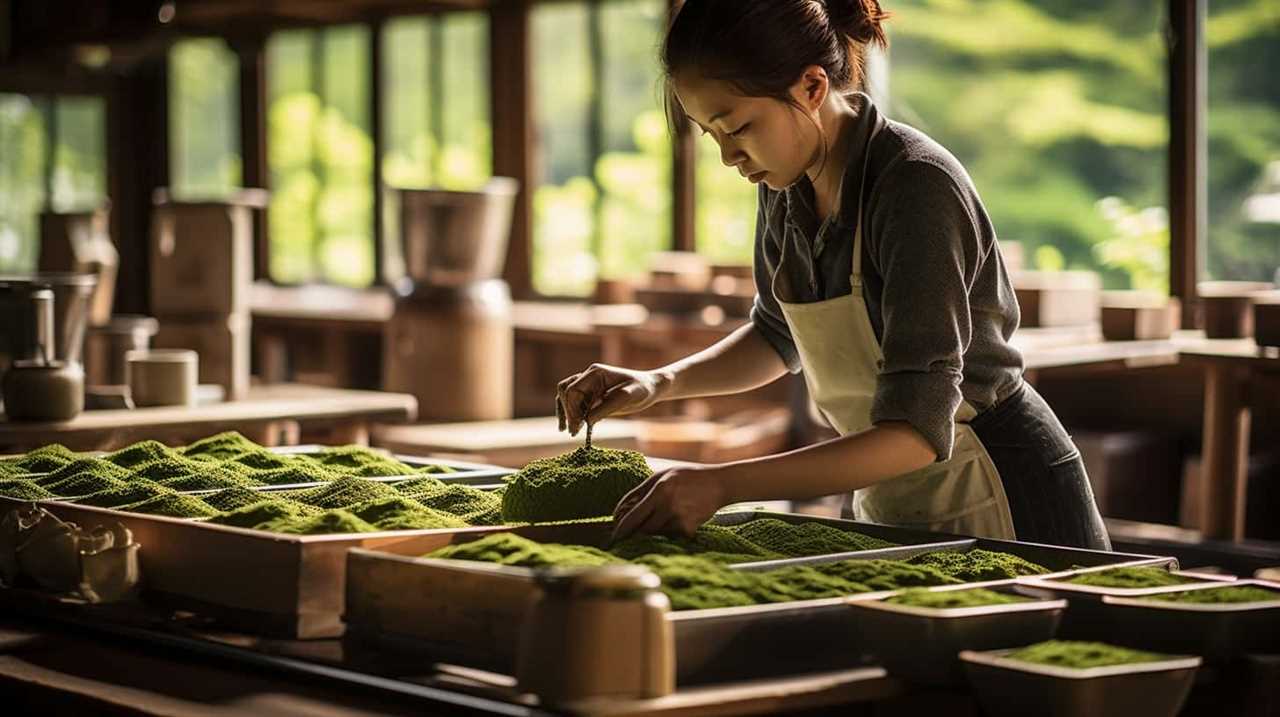
Benefits of Matcha
The detoxification properties of matcha and green tea can provide numerous benefits for our overall health and well-being. When consumed regularly, matcha and green tea can offer the following advantages:
- Boosts concentration: Matcha contains a compound called L-theanine, which promotes a state of calm alertness and enhances focus and concentration.
- Improves digestion: The catechins found in green tea can help to improve digestion by reducing inflammation in the gut and promoting the growth of beneficial bacteria.
- Enhances metabolism: Matcha and green tea can boost metabolism and aid in weight management by increasing the body’s calorie-burning ability.
- Detoxifies the body: Both matcha and green tea are rich in antioxidants that help to eliminate toxins from the body and support the liver’s detoxification process.
- Supports immune function: The high levels of polyphenols in matcha and green tea can strengthen the immune system, helping to protect against illness and infection.
With these benefits in mind, it’s clear that matcha and green tea are valuable additions to a healthy lifestyle.
Now, let’s explore the antioxidant properties of green tea.
Antioxidant Properties of Green Tea
How can the antioxidant properties of green tea benefit our overall health and well-being?

Green tea is rich in antioxidants, particularly a type called catechins. These antioxidants have been extensively studied and have been shown to provide numerous benefits for our health.
Research suggests that the antioxidant benefits of green tea can help protect our cells from damage caused by free radicals, which are unstable molecules that can contribute to chronic diseases and aging.
Green tea has also been found to have anti-inflammatory properties, which can help reduce inflammation in the body and promote overall health. Additionally, green tea has been associated with improved heart health, weight management, and even a lower risk of certain types of cancer.
Incorporating green tea into our daily routine can provide us with a natural and effective way to support our overall health and well-being.
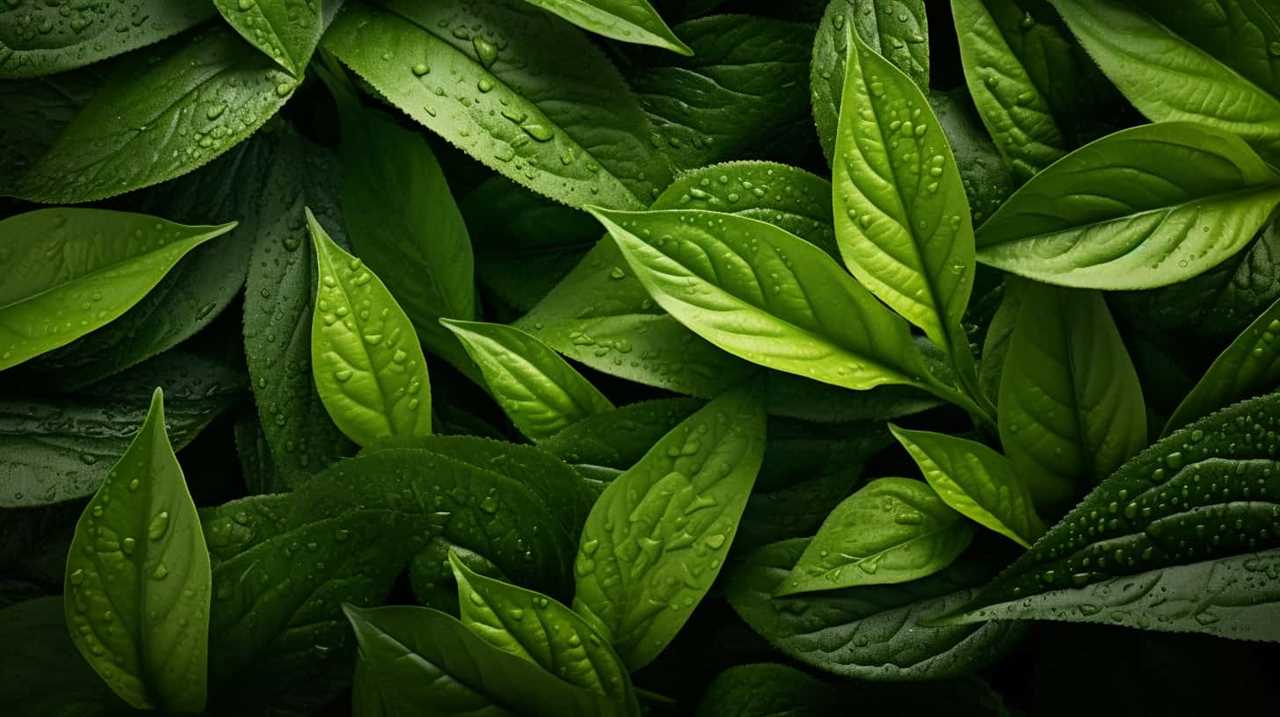
Detoxifying Effects of Tea
To maximize the detoxifying effects of tea, incorporating a daily dose of matcha or green tea into our routine can provide us with a powerful antioxidant boost. Tea detoxification has been a popular practice for centuries, and it offers numerous benefits for our overall well-being. Here are five key reasons why detox teas like matcha and green tea are beneficial:
- Detox tea benefits our liver by promoting the elimination of toxins and supporting its natural detoxification processes.
- Tea detoxification helps to flush out harmful substances from our body, aiding in weight loss and maintaining a healthy metabolism.
- The antioxidants found in matcha and green tea help to reduce inflammation and prevent oxidative damage to our cells.
- Detox teas can improve digestion and promote a healthy gut by soothing the digestive system and alleviating bloating and constipation.
- Consuming tea regularly can boost our immune system, providing us with increased resistance against diseases and infections.
Now that we understand the detoxifying effects of tea, let’s delve into how matcha and green tea can benefit our skin health.
Matcha and Green Tea for Skin Health
For skin health, incorporating matcha and green tea into our daily routine can have numerous benefits. Both matcha and green tea are rich in antioxidants, which help protect the skin from free radicals and prevent premature aging. They also have anti-inflammatory properties, which can reduce redness and inflammation, making them suitable for those with sensitive or acne-prone skin. Additionally, the caffeine in green tea can constrict blood vessels and reduce puffiness, while the natural oils in matcha can moisturize and nourish the skin. To fully understand the skin benefits of matcha and green tea, take a look at the table below:
| Matcha | Green Tea |
|---|---|
| Helps improve skin complexion | Reduces appearance of dark circles |
| Protects against UV damage | Fights signs of aging |
| Soothes and calms irritated skin | Helps control oil production |
| Detoxifies and purifies the skin | Hydrates and rejuvenates |
Incorporating matcha and green tea into your skincare routine can be as simple as using matcha-infused skincare products or drinking a cup of green tea every day. Either way, your skin will thank you for it.

Matcha and Green Tea for Brain Health
Incorporating matcha and green tea into our daily routine can also have significant benefits for brain health. Scientific studies have shown the following brain health benefits:
- Enhanced cognitive function: Matcha and green tea contain caffeine and L-theanine, which can improve focus, attention, and alertness.
- Reduced risk of neurodegenerative diseases: The antioxidants in matcha and green tea help protect brain cells from damage and reduce the risk of conditions like Alzheimer’s and Parkinson’s.
- Improved mood and mental well-being: The combination of caffeine and L-theanine in green tea can promote relaxation, reduce stress, and enhance mood.
- Increased brain plasticity: The catechins found in matcha and green tea have been shown to stimulate the growth of new brain cells and enhance brain plasticity.
- Better memory and learning: The compounds in matcha and green tea can enhance memory, learning, and overall cognitive function.
These brain health benefits make matcha and green tea an excellent addition to a daily routine for those seeking to optimize their cognitive function and overall brain health.
Matcha and Green Tea Recipes to Try
We have discovered some delicious matcha and green tea recipes that you should try.
If you’re looking for a refreshing and energizing drink, matcha smoothie recipes are the way to go. Matcha smoothies combine the vibrant and earthy flavors of matcha with fruits like banana, mango, or berries to create a healthy and flavorful treat.
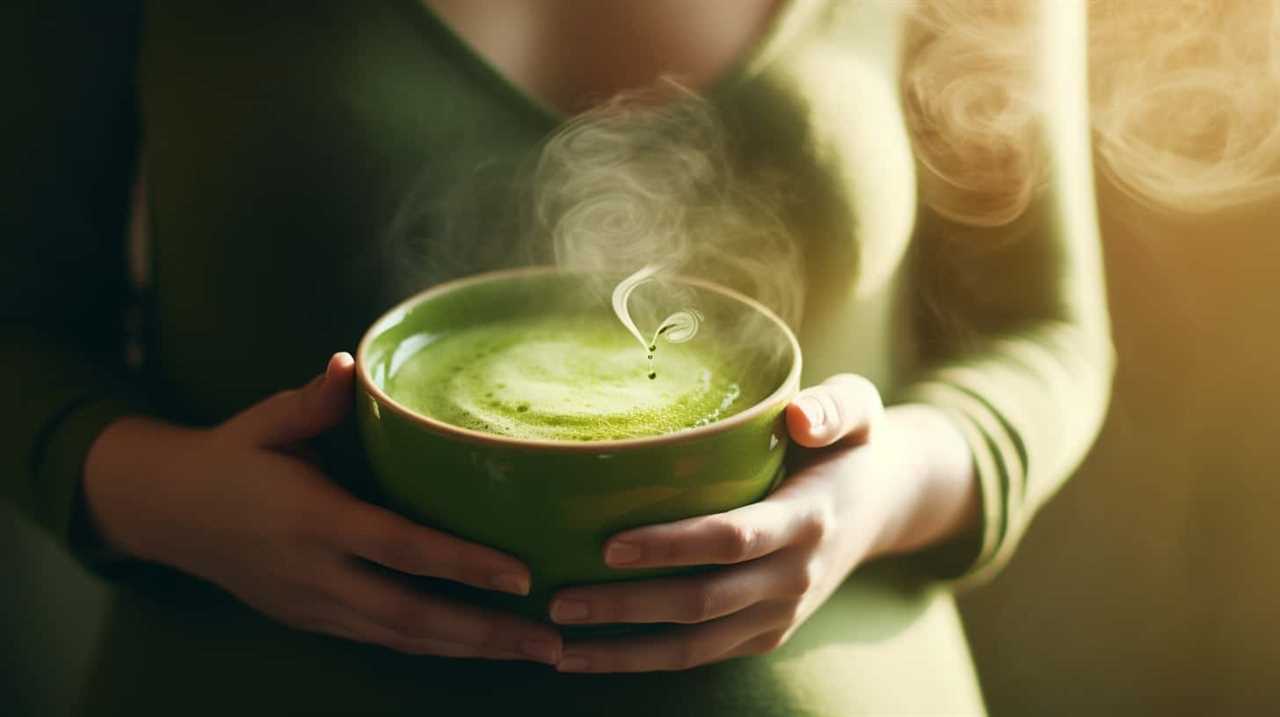
Whether you prefer a creamy and indulgent smoothie or a light and refreshing one, there are countless matcha smoothie recipes available for you to experiment with.
On the other hand, if you have a sweet tooth, green tea infused desserts are a must-try. From green tea ice cream to green tea macarons, these desserts offer a unique twist on classic treats, infusing them with the delicate and aromatic flavors of green tea.
Where to Buy Quality Matcha and Green Tea
To find high-quality matcha and green tea, we recommend exploring specialty tea shops or online retailers. Here are some buying options to consider:
- Ippodo Tea: Known for their premium Japanese green teas, Ippodo Tea offers a wide selection of matcha and green tea sourced directly from Kyoto, Japan.
- Harney & Sons: With a reputation for sourcing high-quality teas from around the world, Harney & Sons offers a variety of green teas, including matcha, in loose leaf and tea bag forms.
- TeaHaus: This online retailer specializes in teas from different regions, including Japan and China. They offer a range of matcha and green teas, allowing you to explore different flavor profiles.
- Palais des Thés: With a focus on quality and sustainability, Palais des Thés offers a curated selection of green teas, including matcha, sourced from various regions known for their tea production.
- Art of Tea: A California-based tea company, Art of Tea offers organic and fair-trade certified matcha and green teas that are carefully sourced for their flavor and health benefits.
Exploring these options will ensure you have access to high-quality matcha and green tea, allowing you to enjoy their numerous health benefits.
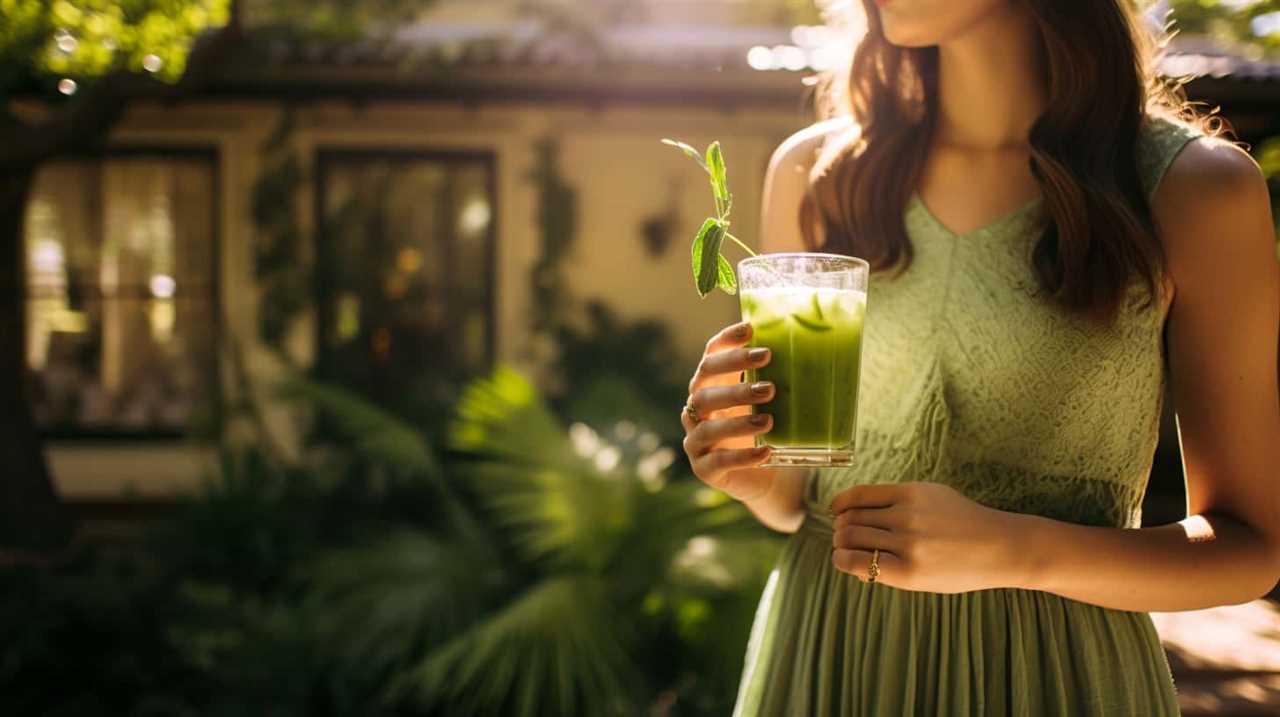
Frequently Asked Questions
Is Matcha the Same as Green Tea?
Matcha and green tea are not the same. Matcha is a powdered form of green tea, made from ground tea leaves. It has unique benefits and can be used in various recipes for a delightful culinary experience.
Can Matcha and Green Tea Be Consumed by Children?
Yes, matcha and green tea can be consumed by children. Matcha offers numerous benefits, such as improved focus and antioxidants, while green tea provides hydration and boosts the immune system. Try incorporating matcha into delicious recipes for added health benefits.
Are There Any Side Effects of Drinking Matcha or Green Tea?
There can be potential side effects from excessive consumption, but when consumed in moderation, matcha and green tea offer various benefits, including potential weight loss benefits associated with matcha.
Can Matcha and Green Tea Be Used as Natural Remedies for Common Ailments?
Matcha and green tea can be effective natural remedies for common ailments. They have been found to help alleviate allergies and improve digestion. Incorporating these teas into your routine can provide potential health benefits.
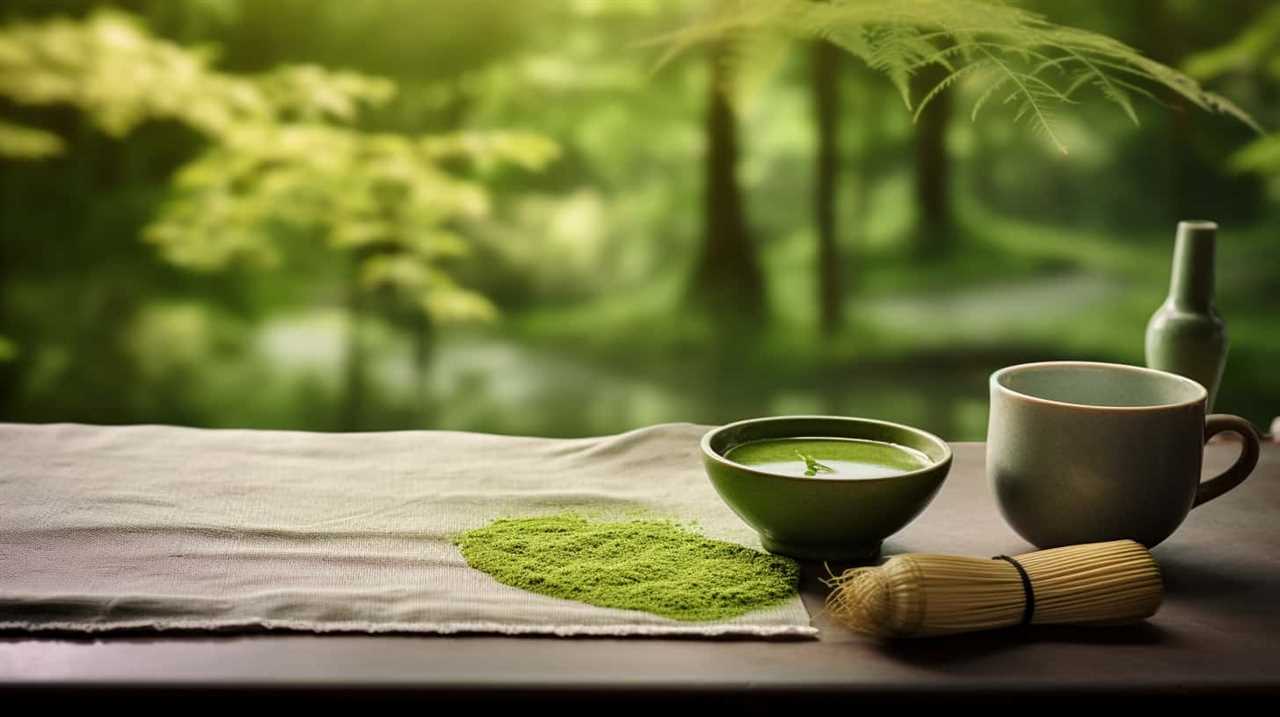
How Does the Taste of Matcha Compare to Regular Green Tea?
Matcha has a unique flavor profile, distinct from regular green tea like sencha. It has a rich, vegetal taste with a hint of sweetness. The preparation method and the use of whole tea leaves contribute to its vibrant and complex flavor.
Conclusion
In conclusion, matcha and green tea have a rich history and cultural significance. They come in different varieties and are produced through a meticulous process.
Drinking matcha and green tea offers numerous benefits for both skin and brain health. From traditional preparations to innovative recipes, there are endless ways to enjoy these teas.
For quality matcha and green tea, it’s important to know where to buy them. So, take a sip and let the vibrant flavors and soothing aroma transport you to a world of wellness and indulgence.
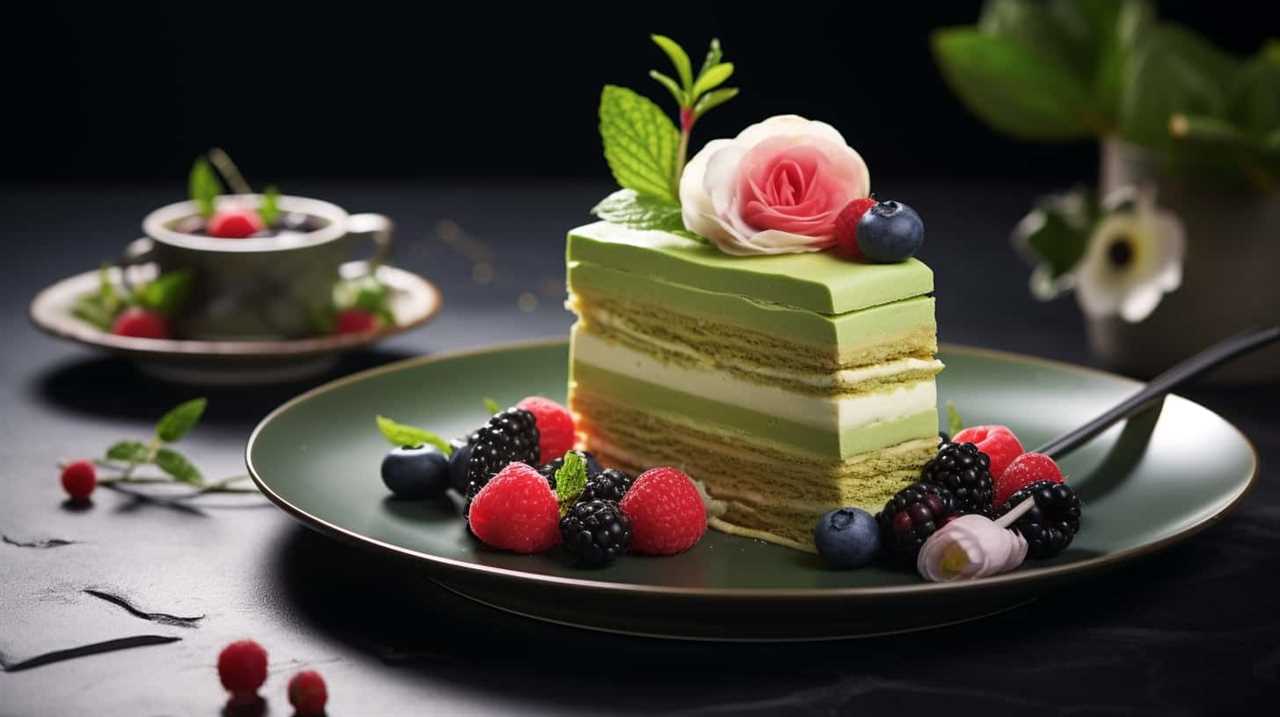
Justin is a seasoned author, coffee and tea enthusiast, and an essential member of the Cappuccino Oracle team. With a keen appreciation for the complexities of coffee, coffee alternatives, and tea, Justin has dedicated his professional career to exploring these realms and sharing his insights with readers worldwide.
Justin’s immersion in the world of coffee, coffee alternatives, and tea began at a young age, kindling a passion that extended beyond mere consumption. This love for these beverages led him to combine his talent for writing with his devotion to coffee and tea, bringing him to Cappuccino Oracle as a dedicated author.
Matcha
Unveiling The Mysteries Of Matcha: Insights On Its Origins, Production, And Quality

Have you ever been curious about the mysteries behind the rich and natural flavors of matcha? If so, get ready to join me on an adventure as we uncover the secrets of matcha, delving into its origins, production, and quality.
As a lover of all things tea, I have delved deep into the world of matcha, immersing myself in its rich history and intricate production process. From the shade-grown tea leaves to the meticulous grinding technique, every step is a labor of love that culminates in the velvety smooth powder we know as matcha.
Join me as we unravel the secrets behind this ancient Japanese tradition and discover why quality is key when indulging in this verdant elixir. We’ll explore the nuances of flavor, the importance of sourcing, and even delve into the fascinating world of other tea varieties.
So grab a cup, sit back, and let’s dive into the captivating world of matcha.
Key Takeaways
- Matcha tea is made from powdered green tea leaves and has a long and labor-intensive production process.
- Premium matcha is made from the first harvest in early spring, using the top 3 sprouts of the tea plant and ground tencha leaves.
- Cheaper matchas may skip some steps in the production process and are more suitable for matcha lattes.
- High-quality matcha is recommended for sparing consumption, as it has a smoother flavor and more health benefits compared to cheaper matchas.
What is matcha?
I’ve learned that matcha is a powdered green tea made from special tea leaves that are shaded before harvest, and it has a long and labor-intensive production process.
There are different types of matcha available, but the premium matcha is made from the first harvest in early spring, using only the top 3 sprouts of the tea plant. The leaves are then steamed, dried, and have their stems removed before being ground into a fine powder using a specialized mill made of granite.
It’s important to note that high-quality matcha is recommended for sparing consumption, as it has a complex production process that results in a smooth flavor. Matcha also offers various health benefits, such as being rich in antioxidants, boosting metabolism, and improving mental alertness.
Production process
The matcha production process involves shading the tea leaves before harvest and selecting the top three sprouts of the tea plant for premium matcha. Shading is a technique used to enhance the flavor and quality of the tea leaves. By covering the tea plants with shade, the leaves produce more chlorophyll and amino acids, resulting in a vibrant green color and a rich, umami taste.
After the shading period, only the top three sprouts of the tea plant are carefully handpicked for premium matcha. These selected leaves, known as tencha leaves, are then steamed, dried, and have their stems removed.
Finally, the tencha leaves are ground into a fine powder using a specialized granite mill. This process results in the smooth and concentrated matcha powder that we enjoy.
Quality and consumption
Let me tell you, indulging in high-quality matcha is like sipping a vibrant green elixir that awakens your taste buds and nourishes your body with its rich flavor and numerous health benefits. Matcha’s health benefits are truly remarkable. Packed with antioxidants, vitamins, and minerals, matcha is known to boost metabolism, enhance focus and concentration, and strengthen the immune system.
But not all matcha is created equal. Different grades of matcha exist, ranging from ceremonial grade to culinary grade. Ceremonial grade matcha is made from the highest quality tencha leaves and has a smooth, vibrant green color and a delicate, umami flavor. It is best enjoyed on its own, whisked with hot water.
On the other hand, culinary grade matcha is more affordable and is suitable for making matcha lattes, smoothies, and baked goods. Although it may have a slightly bitter taste and a duller color, it still provides health benefits.
So, whether you choose to indulge in high-quality ceremonial grade matcha or opt for the more affordable culinary grade, incorporating matcha into your routine is a delicious way to reap its health benefits.
Frequently Asked Questions
What are some popular ways to enjoy matcha besides drinking it as tea?
Besides drinking matcha as tea, some popular ways to enjoy it include indulging in matcha desserts like matcha ice cream, matcha cake, and matcha cookies. Additionally, matcha smoothies are a refreshing and healthy option.
Are there any specific health benefits associated with consuming matcha?
I’m no expert, but matcha is said to have potential health benefits. Some claim it can aid in weight loss due to its high antioxidant content and metabolism-boosting properties. However, more research is needed to confirm these claims.
How does the quality of matcha affect its flavor and overall experience?
The quality of matcha directly affects its flavor and overall experience. Higher quality matcha, made from carefully selected leaves and processed with precision, offers a smoother and more vibrant flavor, while lower quality matcha may have a less appealing taste and color.
Can matcha be used in cooking or baking?
"Where there’s matcha, there’s a way! Matcha can be used in a variety of cooking and baking recipes, adding a vibrant green color and a unique earthy flavor to dishes like matcha desserts."
Are there any specific tips or techniques for properly preparing matcha tea at home?
To properly prepare matcha tea at home, start by sifting the matcha powder to remove any clumps. Then, choose water at around 175°F to 180°F for the best flavor. Gradually add water to the matcha and whisk in a "W" or "M" motion until frothy. Enjoy!
Conclusion
In conclusion, matcha tea is not just a beverage, but a rich and fascinating tradition that has evolved over centuries.
From its origins in Japan to its intricate production process, matcha is a labor of love.
The quality of matcha is crucial, as the steps taken in its production directly impact its flavor and aroma.
Whether you’re a matcha connoisseur or a beginner, there is a matcha tea out there for you.
So, why not indulge in a cup of this vibrant green elixir and experience the magic of matcha for yourself? It’s a journey worth embarking on!
Arf, an author and an innovative enthusiast of coffee, coffee alternatives, and tea, plays a crucial role as a contributor to the esteemed Cappuccino Oracle platform. Renowned for his curiosity and passion for these captivating beverages, Arf has carved out a unique space for himself in the world of exploration and writing. He realized that coffee, coffee alternatives, and tea are not mere drinks to keep one awake, but universes of flavors and stories waiting to be explored.
Arf’s articles for Cappuccino Oracle blend meticulous research with personal experiences, providing readers with an in-depth understanding of various types of coffee, coffee alternatives, and tea, along with their unique characteristics, cultures, and histories. His honest reviews and engaging narratives guide readers on their own journeys, helping them discover their preferences and find their perfect brew.
Matcha
Unveiling The Truth Behind Starbucks’ Matcha: A Disappointing Blend

Being a lover of tea, I was eager to sample Starbucks’ matcha beverages, anticipating a flavorful and genuine taste. However, to my dismay, I found that it was a subpar mixture of inexpensive green tea powder and an excessive amount of sugar. This was a stark contrast to the customary matcha experience that I had grown accustomed to.
The use of low-quality matcha by Starbucks is driven by the need for mass production and a consistent taste across all locations. But in this pursuit, they have sacrificed the true essence of matcha. Authentic matcha production involves meticulous steps to ensure a high-quality and flavorful product, steps that Starbucks seems to skip.
The result is a matcha latte packed with 32 grams of sugar, equivalent to a can of soda, and a whopping 240 calories. It’s time to unveil the truth behind Starbucks’ matcha and explore better options for a truly satisfying tea experience.
Key Takeaways
- Starbucks uses a cheap green tea powder for their matcha drinks, which may not even be considered matcha.
- The cheap matcha powder is mixed with a lot of sugar, negating the health benefits and undermining the quality of the tea.
- Starbucks’ matcha latte contains a high amount of sugar, similar to a can of soda, and has a significant number of calories.
- To have a better matcha experience, it is recommended to explore premium, first harvest matcha made by talented farmers in Japan and to try different matcha options to find preferred taste.
What is Starbucks Matcha?
Starbucks Matcha is a cheap green tea powder mixed with a high amount of sugar, which not only undermines the health benefits of matcha but also fails to deliver the natural, great-tasting flavor of authentic matcha tea.
The ingredients used in Starbucks matcha include low-quality green tea powder that is likely produced on a large scale. Unlike traditional matcha production methods, Starbucks skips certain steps to save time and money. These steps, such as shading the tea plants to reduce bitterness and selecting the top leaves for their flavor and nutrients, are crucial in creating high-quality matcha.
Instead, Starbucks opts for a blend of cheap green tea powder mixed with sugar, resulting in a dull and bitter flavor. This disappointing blend of ingredients does not live up to the standards of true matcha tea.
Quality vs. Cheap Matcha
Indulging in high-quality matcha is like savoring a delicate melody that dances on your taste buds, while settling for cheap matcha is akin to a discordant symphony that leaves a bitter aftertaste. When it comes to matcha, quality matters. Traditional matcha production is an art that requires time, patience, and attention to detail. The importance of shading the tea plants, selecting the top leaves, and using a stone mill to grind the leaves into a fine powder cannot be overstated. These steps not only enhance the flavor but also preserve the health benefits of matcha. High-quality matcha is rich in antioxidants, boosts metabolism, and promotes a sense of calm. On the other hand, cheap matcha often lacks these qualities as it skips crucial steps and is mixed with sugar and other additives. Don’t settle for a subpar matcha experience; choose high-quality matcha for its exceptional taste and health benefits.
| Traditional Matcha Production |
|---|
| Shading the tea plants |
| Selecting the top leaves |
| Grinding with a stone mill |
The importance of traditional matcha production cannot be overstated. These steps not only enhance the flavor but also preserve the health benefits of matcha. High-quality matcha is rich in antioxidants, boosts metabolism, and promotes a sense of calm. On the other hand, cheap matcha often lacks these qualities as it skips crucial steps and is mixed with sugar and other additives. Don’t settle for a subpar matcha experience; choose high-quality matcha for its exceptional taste and health benefits.
Recommendations for Better Matcha
Exploring different matcha options can lead to a better matcha experience. When it comes to matcha, not all options are created equal. While Starbucks may offer a convenient matcha latte, there are alternative options that provide a more authentic and higher quality experience.
Premium matcha, specifically first harvest matcha, is made by talented farmers in Japan and can be enjoyed plain, without the need for excessive sugar or additives. By choosing premium matcha, you can reap the full benefits that matcha has to offer, such as its high antioxidant content and potential health benefits.
Additionally, exploring different types of matcha, such as Japanese black tea, can expand your taste palate and introduce you to new and exciting flavors. So, why settle for a disappointing blend when there are better matcha options out there waiting to be explored?
Frequently Asked Questions
How is Starbucks matcha different from traditional matcha?
Starbucks matcha differs from traditional matcha in terms of quality and taste. One interesting statistic is that Starbucks’ matcha latte contains 32 grams of sugar, similar to a can of soda, which undermines the health benefits of matcha.
What are the health benefits of matcha and how do they differ between Starbucks matcha and premium matcha?
The health benefits of matcha include high levels of antioxidants, increased energy, and improved focus. However, Starbucks matcha quality is compromised due to the use of cheap powder mixed with sugar, negating these benefits.
Can you customize the sweetness level of Starbucks matcha drinks?
Yes, you can customize the sweetness level of Starbucks matcha drinks. They offer popular matcha drink variations like matcha latte and matcha frappuccino, allowing customers to choose the amount of sweetener they prefer.
Are there any alternative options for matcha drinks at Starbucks?
Yes, there are alternative options for matcha drinks at Starbucks. However, it’s important to note that the taste may not be comparable to traditional matcha. Exploring different matcha options and Japanese black tea can provide a better experience.
What are the steps involved in producing high-quality matcha and how does Starbucks’ matcha production differ?
Starbucks’ matcha production process differs from traditional matcha production in Japan. High-quality matcha involves shading the tea plants, selecting the top leaves, steaming, drying, and grinding them. However, Starbucks skips these steps, resulting in a lower quality and less authentic matcha experience.
Conclusion
In conclusion, after delving into the truth behind Starbucks’ matcha, it’s clear that their blend falls short of expectations. The use of cheap green tea powder mixed with excessive sugar dilutes any potential health benefits and fails to deliver an authentic matcha experience.
To truly enjoy the rich and flavorful taste of matcha, it’s recommended to explore premium, first harvest options crafted by skilled Japanese farmers. Don’t settle for subpar matcha; treat yourself to a tea experience that’ll leave your taste buds dancing with delight.
Arf, an author and an innovative enthusiast of coffee, coffee alternatives, and tea, plays a crucial role as a contributor to the esteemed Cappuccino Oracle platform. Renowned for his curiosity and passion for these captivating beverages, Arf has carved out a unique space for himself in the world of exploration and writing. He realized that coffee, coffee alternatives, and tea are not mere drinks to keep one awake, but universes of flavors and stories waiting to be explored.
Arf’s articles for Cappuccino Oracle blend meticulous research with personal experiences, providing readers with an in-depth understanding of various types of coffee, coffee alternatives, and tea, along with their unique characteristics, cultures, and histories. His honest reviews and engaging narratives guide readers on their own journeys, helping them discover their preferences and find their perfect brew.
Matcha
The Ultimate Guide To Using Chashaku: Your Matcha Essential

Being a lover of matcha, I am aware that the crucial factor in achieving the perfect matcha bowl is the equipment we utilize. When it comes to preparing matcha, there is one tool that is particularly essential: the chashaku.
This bamboo spoon, with its elegant design and precise measurements, is the secret weapon of matcha lovers worldwide. In this ultimate guide, I will take you on a journey through the history and evolution of the chashaku, and show you how to use it like a pro.
From its origins as a metal or ivory scoop to its modern-day incarnation in bamboo, the chashaku has come a long way. With its 48° bend and 18mm length, it effortlessly scoops the perfect amount of matcha from its container.
So grab your chashaku and get ready to elevate your matcha game to new heights. Let’s dive in and discover the wonders of this matcha essential.
Key Takeaways
- Chashaku is a bamboo spoon used to scoop matcha powder in the Japanese tea ceremony and by matcha lovers worldwide.
- Chashaku is one of the three important tea utensils used in the tea ceremony and is about 18mm in length with a 48° bend at the end for scooping.
- Chashaku is made of bamboo to avoid negative reactions with matcha powder and is a great measurement tool for matcha powder.
- Two scoops of chashaku is the standard amount for a bowl of matcha tea, and it is easy to maneuver in matcha tins or natsume due to its small size.
What is Chashaku?
Chashaku is a bamboo spoon used to scoop matcha powder, and it’s one of the three important tea utensils used in the Japanese tea ceremony.
Made from a single piece of bamboo, this elegant tool has a long history dating back to the Muromachi period in Japan. Originally crafted from metal or ivory, chashaku evolved to be made of bamboo due to its natural properties and to avoid any negative reactions with matcha powder.
The design of chashaku is both functional and beautiful, with a length of about 18mm and a 48° bend at the end for easy scooping. There are different styles of chashaku scoops, each with its own unique shape and characteristics. The back of the chashaku has a rough texture, while the face is smooth and sleek.
Whether you’re a matcha lover or a tea ceremony enthusiast, using a chashaku adds a touch of authenticity and tradition to your matcha preparation.
History and Evolution
During the Muromachi period in Japan, the chashaku spoon evolved from being made of metal or ivory to its current bamboo form, which is about 18mm in length and has a 48° bend at the end for easier scooping. The history and evolution of the chashaku is a testament to its significance in Japanese tea ceremonies and its cultural importance in matcha preparation.
| The significance of chashaku in Japanese tea ceremonies | The cultural importance of chashaku in matcha preparation |
|---|---|
| Chashaku is one of the three important tea utensils used in the tea ceremony. | Chashaku is a great measurement tool for matcha powder. |
| Chashaku originated in Japan during the Muromachi period. | Chashaku’s small size allows for easy maneuvering in matcha tins or natsume. |
| Originally made of metal or ivory, chashaku evolved to be made of bamboo. | Chashaku is made from a single piece of bamboo and shaped with a bend for the scoop. |
| Chashaku is made of bamboo to avoid negative reactions with matcha powder. | The back of chashaku has a rough texture, while the face is smooth and sleek. |
The chashaku’s role in Japanese tea ceremonies cannot be understated. It is one of the three essential utensils used in the tea ceremony, alongside the chawan (tea bowl) and chasen (tea whisk). The chashaku’s small size and precise measurement make it the perfect tool for scooping matcha powder. Its evolution from metal or ivory to bamboo shows the cultural importance placed on this utensil. The chashaku’s design, with its gentle bend and smooth face, allows for easy and graceful scooping of matcha. Using the chashaku is not only practical but also a way to honor the centuries-old tradition of matcha preparation.
How to Use Chashaku
To use the chashaku, I simply hold it like a pencil and dip the scoop into the matcha container. Then, I carefully lift the chashaku scoop out and place it over the matcha bowl to dump the powder.
It’s a simple and elegant technique that ensures the perfect amount of matcha every time.
But did you know that there are alternative ways to use the chashaku? Some matcha lovers prefer to use a teaspoon or a regular spoon to scoop their matcha powder. While these alternatives may work in a pinch, they don’t offer the same precision and authenticity as the chashaku.
The chashaku’s unique design and size make it the ideal tool for measuring matcha powder. Plus, using the chashaku adds a traditional touch to the matcha preparation process, enhancing the overall experience.
So why settle for anything less? Embrace the chashaku and elevate your matcha game to the next level.
Frequently Asked Questions
What are the different types of materials used to make chashaku besides bamboo?
There’s something truly magical about the chashaku, the bamboo spoon that gracefully scoops matcha powder. While bamboo is the traditional material, chashaku can also be made from metal or ivory, although these alternatives are less common.
Can chashaku be used to scoop other powders besides matcha?
Yes, chashaku can be used to scoop other powders besides matcha. However, it is primarily designed for scooping matcha powder and is most commonly used in Japanese tea ceremonies. To properly clean and care for a chashaku, it is recommended to wipe it with a dry towel or tissue to avoid water damage. The chashaku is a versatile tool with different uses in the tea ceremony, making it an essential item for matcha lovers.
How long does a chashaku typically last before it needs to be replaced?
A chashaku typically lasts for a long time, but the lifespan can vary depending on the material. Bamboo chashaku is the most common and durable option, while metal or ivory may wear down over time. Proper care involves cleaning with a dry towel or tissue to avoid water damage.
Can chashaku be used with different types of matcha bowls or is it specific to a certain style?
Absolutely! Chashaku can be used with various types of matcha bowls, adapting to different styles. Its small size and unique design make it perfect for scooping matcha powder and adding a touch of elegance to your matcha preparation.
Are there any alternative utensils that can be used in place of chashaku for scooping matcha powder?
Yes, there are alternative utensils for scooping matcha powder, such as a teaspoon or a small spoon. However, using a chashaku has its benefits. Its unique design allows for precise measurements and easy maneuvering in matcha tins.
Conclusion
In conclusion, using chashaku isn’t just a practical way to measure and scoop matcha powder, but it’s also an essential tool for embracing the art and tradition of the Japanese tea ceremony.
While some may argue that using a regular spoon can achieve the same result, chashaku offers a unique experience that connects us to centuries of tea culture. Imagine holding the slender bamboo spoon, feeling the weight of tradition in your hand, and delicately scooping the vibrant green matcha powder.
It’s a sensory journey that brings us closer to the beauty and mindfulness of matcha preparation. So, embrace the chashaku, and let it elevate your matcha experience to new heights.
Arf, an author and an innovative enthusiast of coffee, coffee alternatives, and tea, plays a crucial role as a contributor to the esteemed Cappuccino Oracle platform. Renowned for his curiosity and passion for these captivating beverages, Arf has carved out a unique space for himself in the world of exploration and writing. He realized that coffee, coffee alternatives, and tea are not mere drinks to keep one awake, but universes of flavors and stories waiting to be explored.
Arf’s articles for Cappuccino Oracle blend meticulous research with personal experiences, providing readers with an in-depth understanding of various types of coffee, coffee alternatives, and tea, along with their unique characteristics, cultures, and histories. His honest reviews and engaging narratives guide readers on their own journeys, helping them discover their preferences and find their perfect brew.
-

 Americano2 weeks ago
Americano2 weeks agoHow to Make Korean Iced Americano
-

 Americano4 weeks ago
Americano4 weeks agoHow to Make Americano With Moka Pot
-

 Americano4 weeks ago
Americano4 weeks agoHow to Make Iced Americano With Instant Coffee
-

 Americano4 weeks ago
Americano4 weeks agoHow to Make Americano With Bialetti
-

 Americano4 weeks ago
Americano4 weeks agoHow to Make Dutch Bros Americano
-

 Americano7 days ago
Americano7 days agoHow to Make an Iced Americano With Nespresso
-

 Americano2 weeks ago
Americano2 weeks agoHow Many Shots of Espresso for 16 Oz Americano
-

 Americano4 weeks ago
Americano4 weeks agoHow to Make a Hazelnut Americano

















